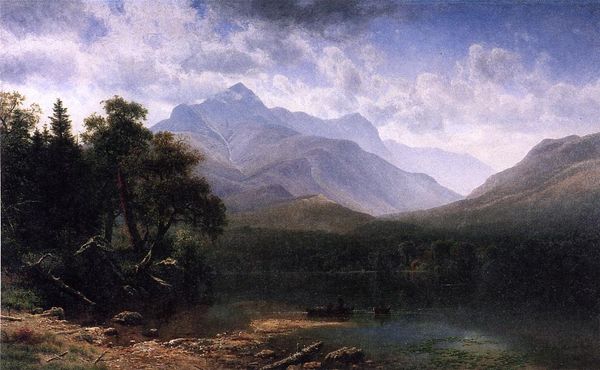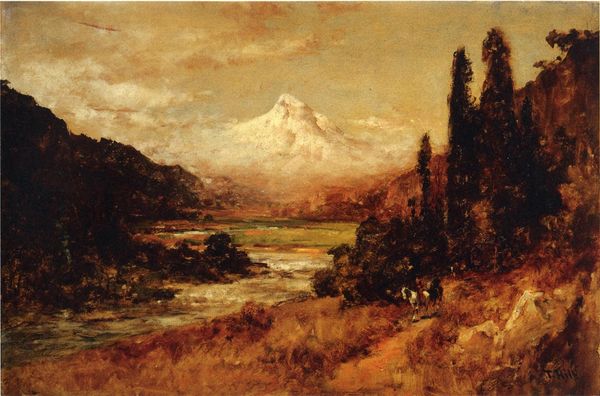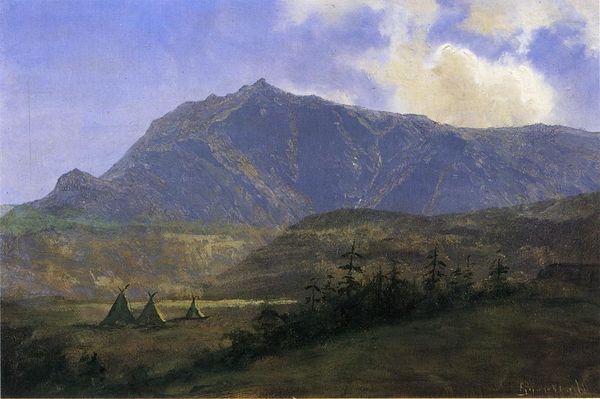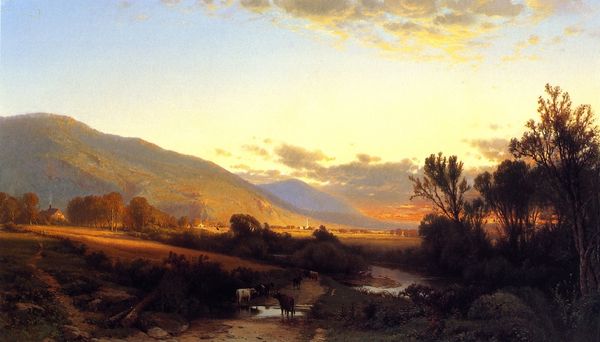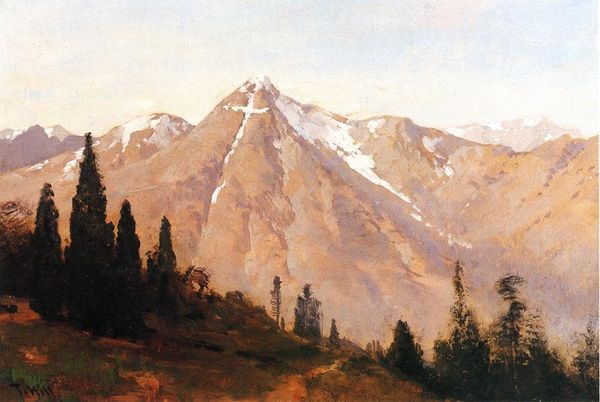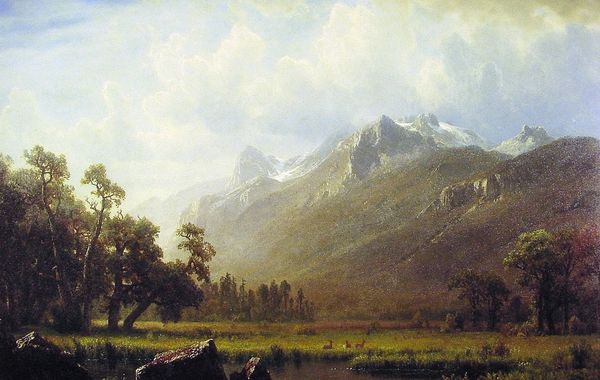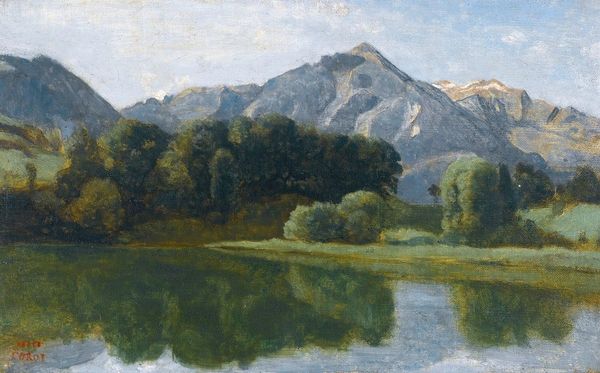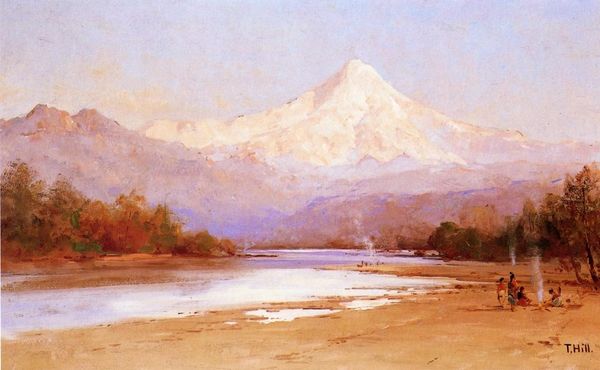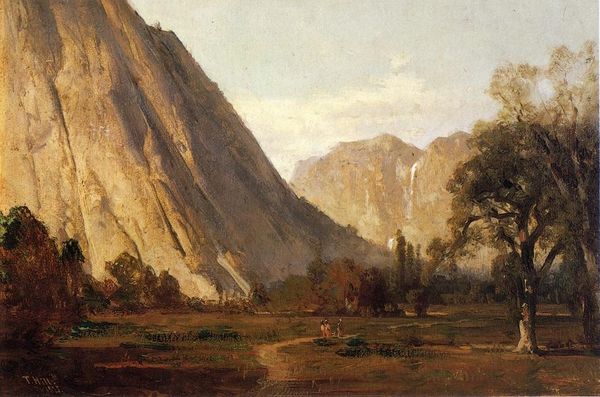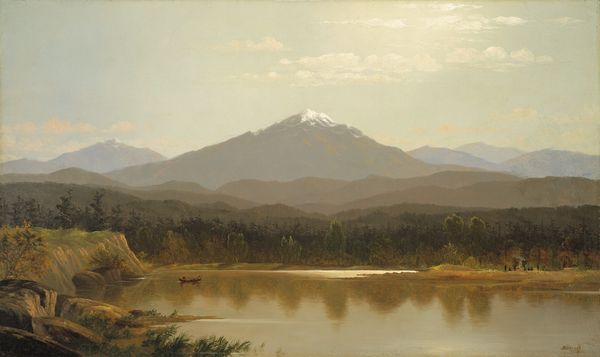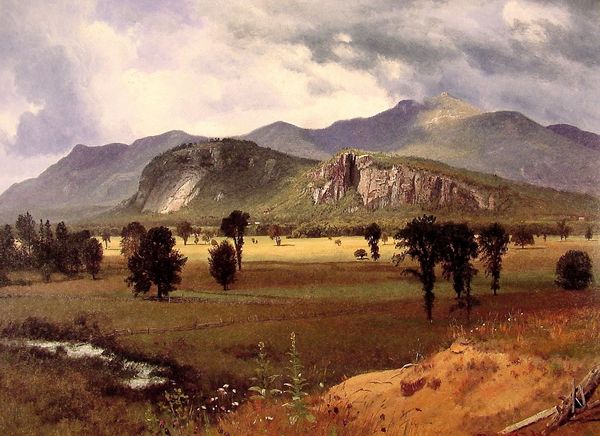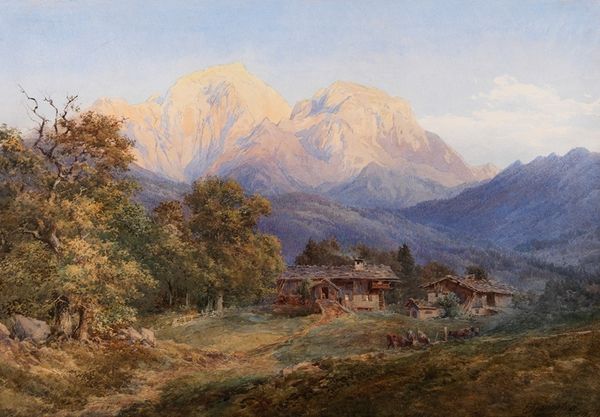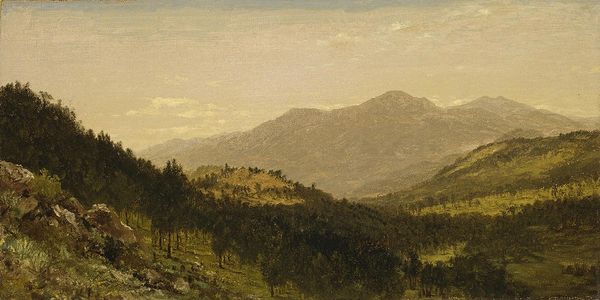
painting, oil-paint
#
sky
#
painting
#
oil-paint
#
landscape
#
oil painting
#
mountain
#
hudson-river-school
#
cityscape
#
realism
Copyright: Public domain
Editor: So here we have "Mount St. Helena, Napa Valley," an oil painting by Thomas Hill. The way the light catches the peak is remarkable, it looks so serene! How do you read this painting? Curator: The initial impression is dominated by a tripartite structure. The painting segregates into distinct horizontal bands: the luminescent sky, the substantial mountain, and the reflective valley floor. Note the calculated recession, creating depth not through linear perspective alone but atmospheric diffusion, modulating color intensity with distance. The subtle shifts of tone and value work to convey spatial volume. Editor: The valley almost seems to be bleeding into the mountain. It's really interesting to see how those sections relate to one another! What about the brushstrokes? Curator: Observe Hill's brushwork—particularly how he differentiates between the ethereal peaks rendered with soft, almost imperceptible strokes, contrasting with the more palpable textures of the foliage and ground through distinct, directional strokes. The varied paint application is not merely representational but communicates a sophisticated awareness of materiality. How does this impact your perception of depth, or even time within the painting? Editor: It does give the painting an abstract quality. All of those layered details bring a sense of timelessness... The sky is infinite! Thanks for explaining this. Curator: Indeed, considering its internal structure refines the work's intrinsic value. Analyzing compositional structure enriches appreciation.
Comments
No comments
Be the first to comment and join the conversation on the ultimate creative platform.
